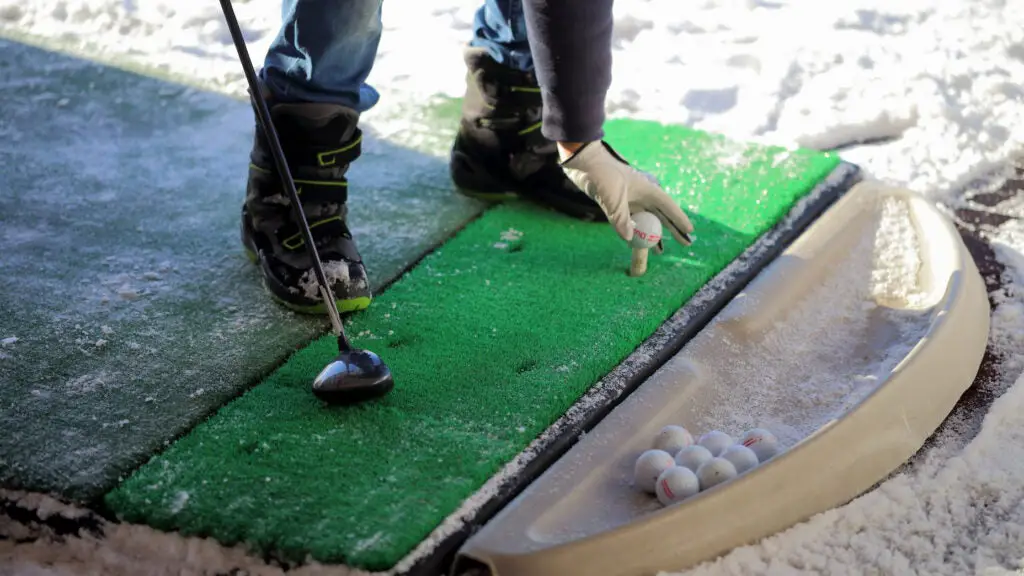What Temperature Is Too Cold For Golf Clubs

Have you ever wondered how temperature can affect the performance of your golf clubs? As a golfer, you know that various factors come into play when it comes to hitting accurate shots and achieving optimal distance. But have you considered the impact of temperature on your clubs? In particular, what temperature is too cold for golf clubs?
In this guide, we will explore the effects of cold temperatures on golf club performance and help you understand the ideal temperature range for optimal playability. From the stiffness of club materials to the compression of the golf ball, temperature plays a crucial role in how your clubs perform on the course.
Cold temperatures can cause club materials to contract, leading to decreased flexibility and stiffness. This, in turn, affects the club’s ability to generate power and transfer energy to the ball. The result? Reduced ball speed, compromised accuracy, and overall diminished performance.
But what exactly is the threshold for cold temperatures? When does the chill become too much for your golf clubs to handle? We will delve into the ideal temperature range that ensures your clubs perform at their best, as well as the signs and risks of using clubs in temperatures that are too cold.
So, if you’re curious about how temperature affects your golf game and want to know how to protect your clubs in chilly conditions, read on. Let’s uncover the secrets of what temperature is too cold for golf clubs and equip you with the knowledge to elevate your game, regardless of the weather.

Understanding the Effects of Cold Temperatures on Golf Club Performance
Cold temperatures can have adverse effects on the performance of golf clubs due to the material properties and construction of the clubs. It’s important to understand these effects to make necessary adjustments and ensure optimal playability.
How Does Cold Temperature Affect Golf Club Performance?
When exposed to cold temperatures, golf clubs undergo material contraction and stiffness, which can significantly impact their performance. The contraction of club materials, such as shafts and clubheads, leads to reduced flexibility and a stiffer feel. This can affect the club’s ability to generate power and transfer energy to the golf ball, resulting in decreased ball speed, distance, and accuracy.
In addition to the clubhead stiffness, the grip performance is also affected by cold temperatures. Grips can harden in the cold, making it challenging to maintain a secure hold and compromising your control over the club.
Determining the Ideal Temperature Range for Optimal Golf Club Performance
To ensure optimal performance, it’s essential to understand the ideal temperature range for your golf clubs. The performance of clubs can vary based on factors such as club material properties, ball compression, and launch characteristics.
Consideration of Club Material Properties
Different materials used in golf club construction, such as steel and graphite, have different contraction rates in response to temperature changes. Steel shafts contract less than graphite shafts, resulting in differential effects on the overall club stiffness and responsiveness. The clubhead and clubface materials also exhibit varying levels of responsiveness in colder temperatures, which can impact the ball’s launch characteristics.
Impact on Ball Compression and Launch Characteristics
Cold temperatures can also affect the compression of the golf ball upon impact. As temperatures drop, the golf ball becomes less compressible, leading to reduced ball speed and lower launch angles. These changes in ball compression and launch characteristics can influence the overall distance and accuracy of your shots.
Signs and Risks of Using Golf Clubs in Too Cold Temperatures
Using golf clubs in extremely cold temperatures can have detrimental effects on both your performance and the clubs themselves. It’s important to be aware of the signs and risks associated with using clubs in such conditions.
Physical Discomfort and Decreased Feel
Playing with golf clubs in very cold temperatures can result in physical discomfort, particularly in your hands and fingers. Numbness or discomfort can impair your ability to grip the club properly and feel the clubhead, leading to a loss of control and diminished shot quality.
Potential Risks to Club Integrity and Performance
Exposing golf clubs to extremely cold temperatures can also pose risks to their integrity and long-term performance. The freezing temperatures can cause materials to become brittle, increasing the likelihood of clubhead or shaft damage. This damage can impact the club’s performance, stability, and durability over time.
Tips for Protecting Golf Clubs in Cold Weather
To mitigate the negative effects of cold temperatures on your golf clubs and maximize their performance, here are some practical tips to consider:
- Proper Storage and Transportation: Protect your clubs by using headcovers or club sleeves to shield them from extreme temperature fluctuations. Avoid leaving your clubs in cold car trunks for extended periods.
- Warm-Up Techniques and Equipment Maintenance: Prior to your round, warm up your clubs by taking a few practice swings. This helps improve club flexibility and minimizes the initial shock of the cold on your equipment. Regularly clean and maintain your clubs to preserve their performance and extend their lifespan.
By following these tips, you can protect your golf clubs and ensure that they perform optimally, even in cold weather conditions.
Conclusion
Understanding the impact of cold temperatures on golf club performance is essential for every golfer. By being aware of the effects of cold temperatures on club stiffness, ball compression, and grip performance, you can make informed decisions and adjustments to optimize your game. Remember to pay attention to signs of discomfort and potential risks to both your performance and the integrity of your clubs when playing in cold weather. With proper care and protection, your golf clubs will continue to deliver the performance you desire, regardless of the temperature outside.






